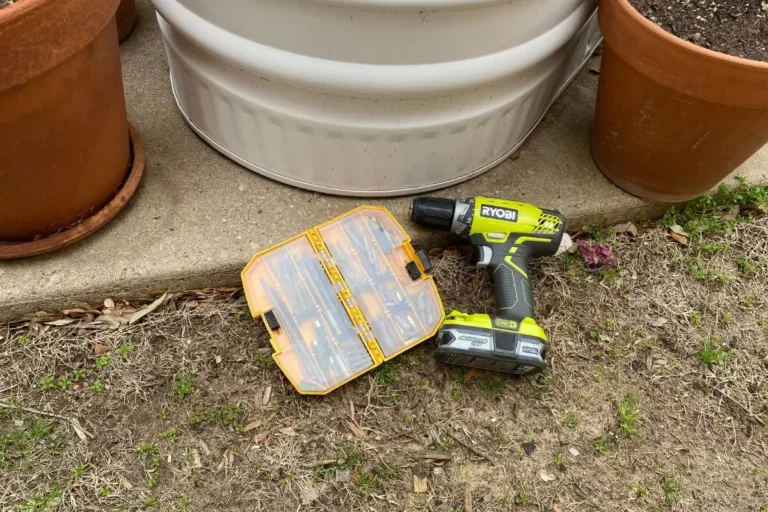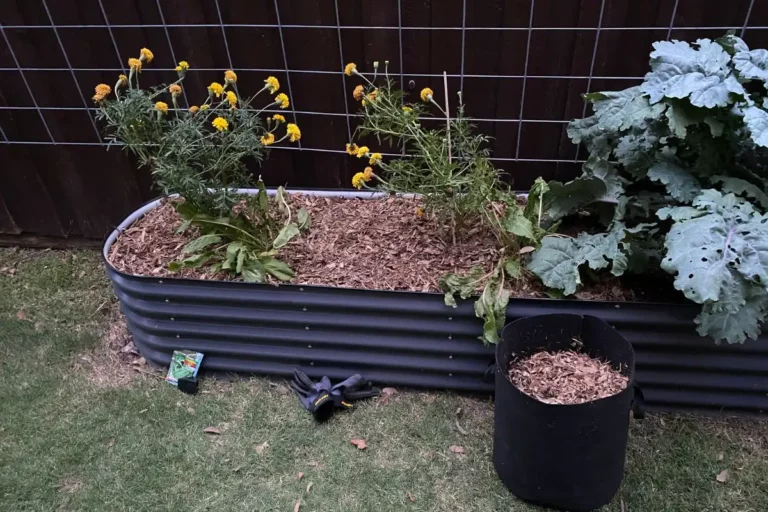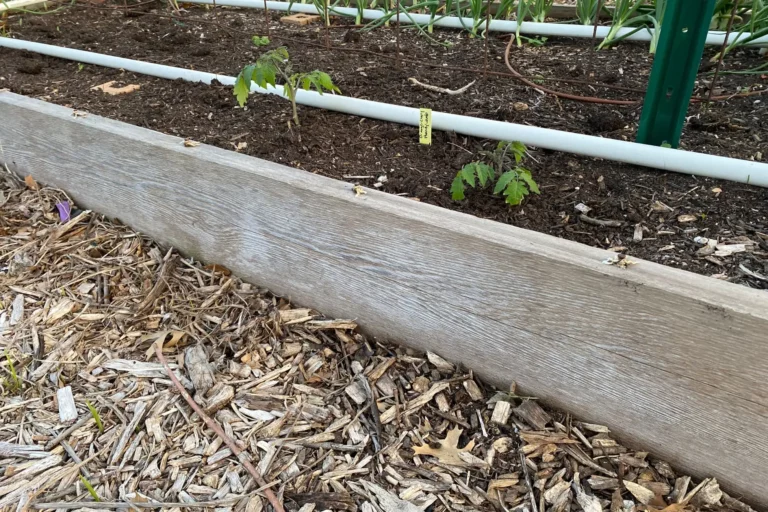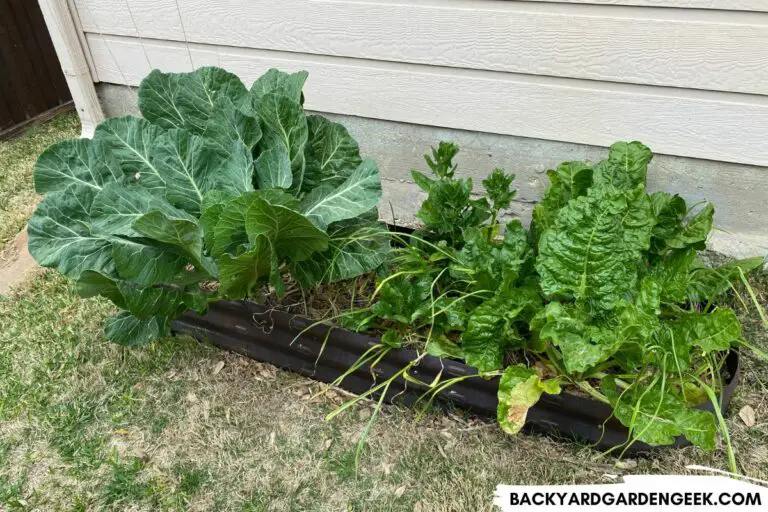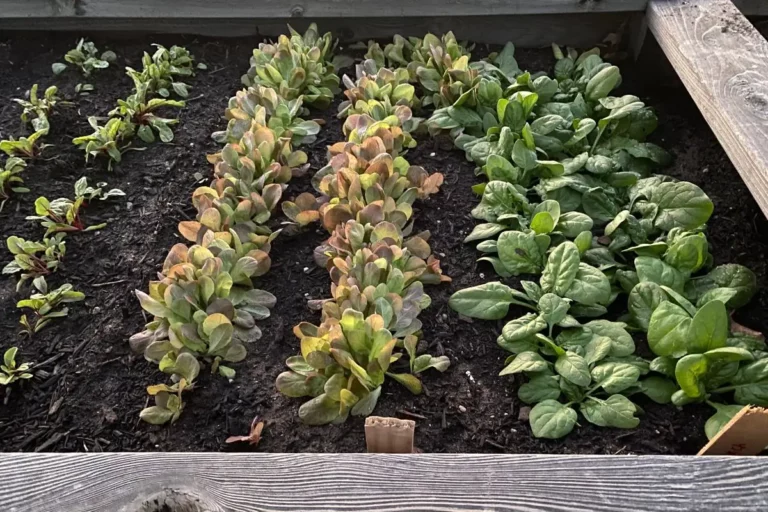Pros and Cons of Raised Garden Beds: Know Before You Grow!
Over the past 15 years, I’ve grown plants in all kinds of ways—containers, grow bags, paint buckets, recycling bins, in-ground gardens, and raised beds.
In doing so, I’ve learned that raised beds are, by far, my favorite way to garden, but they’ve got a few disadvantages that new gardeners should keep in mind as well.
If you’re considering whether to grow your plants in raised beds or not, you’ve come to the right place, so let’s look at the pros and cons of raised beds so that you can decide if they’re right for you!
Raised beds give gardeners greater control over soil composition, allow for better overall drainage, and make it easier to garden. But they can be quite expensive and require maintenance or replacement. There are also quite a few plants that shouldn’t be grown in raised beds.
But these aren’t the only pros and cons when it comes to gardening in raised beds!
What I’d like to do below is to go over every single advantage and disadvantage that’s associated with raised beds so that you can determine whether they’re right for you.
I love gardening in raised beds, but I wish I would have known about their disadvantages ahead of time since I made several mistakes over the years that I could have avoided if I had read more articles like this one.
That’s my hope here. I want you to avoid the mistakes I made when I was a beginner gardener and create the kind of garden that’s going to be best for you and your family.
Now let’s look at the advantages and disadvantages of growing plants in raised beds!
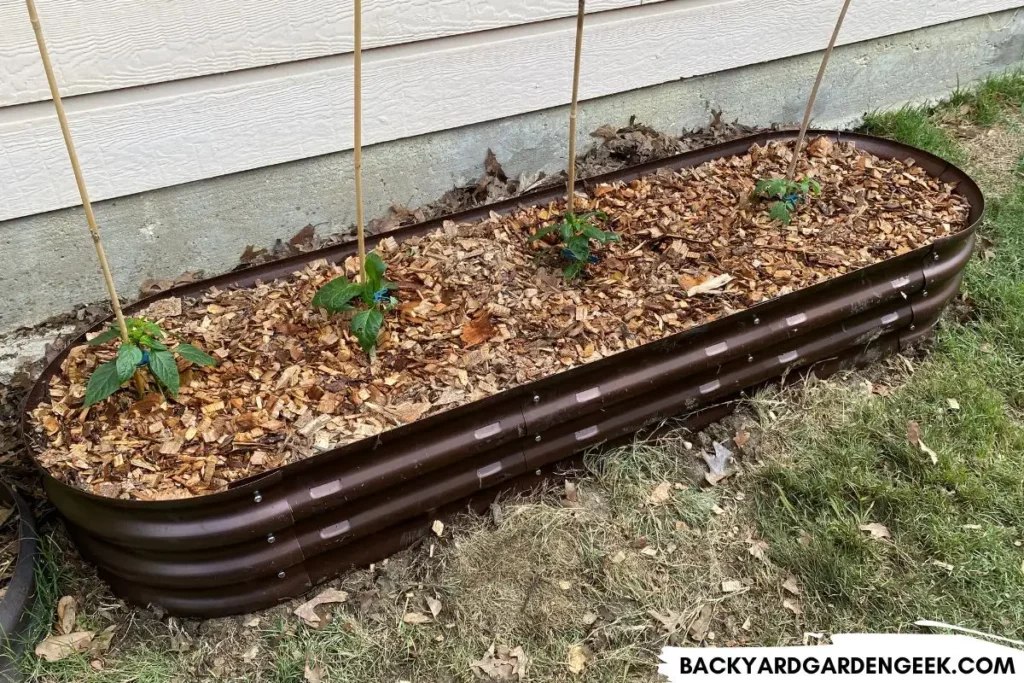
Raised Beds for Beginning Gardeners: Pros vs. Cons
To put together the list of pros and cons that you’ll find below, I’ve thought about all of the many experiences I’ve had with gardening, both before and after I started doing most of my gardening in raised garden beds, and I think I’ve created a fairly comprehensive list.
As you’ll see below, there are many advantages to growing plants in raised beds, but there are also several noteworthy disadvantages.
Here’s the quick list. Below it you’ll find detailed descriptions of everything I’ve learned about gardening with and without raised beds.
| Advantages | Disadvantages |
|---|---|
| Simple Soil Amendments | Construction Confusion |
| Better Drainage | Installation Expenses |
| Easy Access | Maintenance |
| Customizable Designs | Replacement |
| Vertical Possibilities | Susceptible to Heat |
| Pest Management | Hard to Move |
| Companion Planting | Difficult to Scale |
| Soil Warmth | Soil Chill |
| Square Foot Gardening | Unsuitable for Some Plants |
| Weed Reduction | |
| Small Space Success | |
| Good Harvests Per Square Foot | |
| Mobility Aid | |
| Visual Appeal | |
| Unlevel Land |
When I look at a list like this, I can see right away that the advantages of raised bed gardening outweigh the disadvantages.
But for clarity’s sake, I think it’s important to share some details about each of these pros and cons so that you can learn what I’ve learned over the years.
Let’s start with the advantages:
1. Simple Soil Amendments
One of the biggest problems you might run up against has to do with the type of soil on your property.
Some people are lucky enough to have decent soil in their yards. But I definitely don’t. My backyard is entirely composed of thick, hard-packed clay.
One of the nicest things about raised beds is that you can garden on top of your native soil, creating the kind of soil that’ll let plants thrive while helping to amend some of the native soil underneath.
If you want to save money, don’t buy bags of garden soil. You can fill your beds up with all kinds of cheap compostable materials, then cover them in soil.
I not only fill my beds with soil. I’ll often buy my soil in bulk to save money, then amend the soil with vermiculite, perlite, compost, and aged manure.
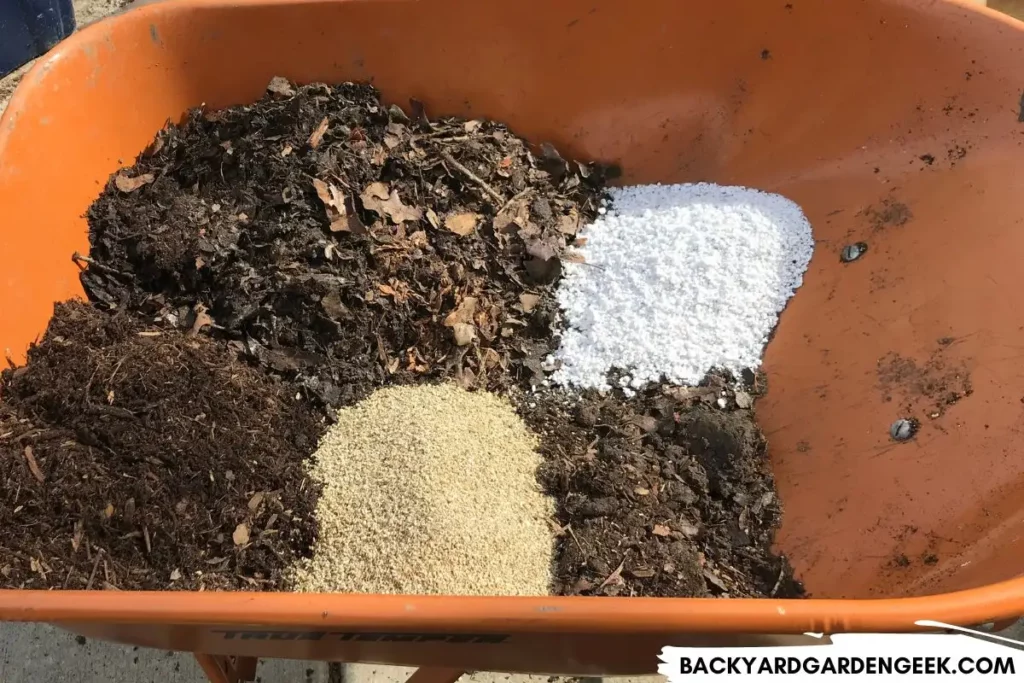
In 8-10 months, those compostable materials will disintegrate into the amended soil, and you’ll have raised beds that’ll allow your plants to thrive.
2. Better Drainage
Because the native soil in my area is clay, it doesn’t drain very well. Once the ground is saturated, the clay turns into the consistency of semi-hardened glue.
Plants do best when they get watered consistently and when that water drains well so their roots don’t get waterlogged.
Raised beds help with water drainage. Because you can amend the soil and make sure that it’s neither too sandy nor too silty, you can lay the groundwork for good water drainage later on.
I like to water my raised garden beds deeply, especially during the hot Texas summers. Because I’ve nurtured healthy soil in my raised beds, and because I put down thick layers of mulch around my plants, the soil retains moisture, but it also drains very well, even if we have heavy rains.
3. Easy Access
One of the nice things about raised garden beds is that they make it possible to garden just about anywhere.
When I walk out my back door, I’ve got a raised garden bed on the patio, several raised beds behind my garage, and a few raised beds over by my air conditioner units. And it only takes me 10 to 20 steps to get to any of them.
This means that I’ve created a backyard garden that is easily accessible.
If you’ve got to run outside during bad weather to harvest some veggies or to cover your plants before a thunderstorm hits, you don’t want to run very far to do so. It’s much nicer to have raised beds that are easily accessible.
The same goes with watering. I designed my backyard garden so that I could easily reach all of my beds with a single 75-foot water hose.
This makes gardening much more convenient, no matter what the weather is like outside.
4. Customizable Designs
When it comes to raised garden beds, you have countless options for configuring them.
You can purchase circular beds, square beds, rectangular beds, even triangular or U-shaped beds.
If you’re building your own raised beds, you can design them however you like and configure them in any number of different ways to fit the dimensions of your backyard or property.
I’ve got narrow strips of previously unused lawn on either side of my house. The areas get plenty of light, but they aren’t good for much of anything and my kids never play there, so I purchased skinny rectangular beds to fit in those spaces.
The results are perfect, exactly what I need to maximize my harvest in those areas.
What’s more, you can buy raised garden beds by Birdie’s or Vego Garden that can be configured in 6-10 different ways, depending on the size and shape of your gardening area. This makes installation a breeze since there’s one product but multiple configurations.
Simply put, you can do just about anything with raised garden beds in terms of design and layout!
5. Vertical Possibilities
Speaking of design, a major advantage to gardening in raised beds is the ability to garden vertically.
If, like me, you don’t have a huge property, you’ve got to grow as many plants vertically as possible to make the most of your space.
If you’ve built wooden raised beds, you can attach wooden 2×4 beams to the sides of the bed, then build a wooden trellis over the top, giving you additional opportunities to garden.
I volunteer at a community garden where we’ve done this, and it works great!
If you prefer metal raised beds, you can do what I’ve done and pick up cattle panels at your local Tractor Supply Company (or any store near you that sells them).
I’ve got several cattle panels in my backyard right now. I hung one of them from a fence, where I’ve grown cucumbers, beans, and peas for the past 2 years.
I took several other panels and curved them so that they started in one raised bed but ended in another. I used t-posts and cable ties to support them, and I can now grow many vining plants in those beds.
In other words, raised bed makes it easy to grow your veggies vertically and thus save valuable space for other plants.
6. Pest Management
Over the years, I’ve battled my share of garden pest: aphids, armyworms, cabbage loopers, caterpillars, cucumber beetles, harlequin beetles, potato beetles, spider mites, stink bugs, and whiteflies, to name a few.
Raised garden beds allow me to put several pest management strategies to work at once.
On the one hand, healthy plants have natural defense mechanisms against garden pests, so as I noted above, I can amend the soil and ensure consistent watering and proper drainage, which will keep my plants as healthy as possible and thus as able to withstand attacks as they can be.
I can also be strategic in the plants I choose for my raised beds and place plants around the edges that act as pest deterrents or even trap crops, encouraging bugs to move elsewhere or distracting them and thus keeping them away from my more valuable plants.
But one of the most important things to keep in mind when it comes to pest management is this: The best kind of pest management is the kind that takes place after you’ve spotted early infestations.
Take spider mites, for example. They don’t just cover entire plants. Spider mites typically show up on a few lower, outer leaves, then make their way up the plant as the infestation progresses.

Aphids spread from plant to plant as well, so selecting plants that aphids don’t like or spacing out aphid-preferred plant varieties will help hinder or slow down their ability to migrate from plant to plant.
Raised beds make it easier to see your plants and thus help you notice early signs of infestation. When you do, I recommend using natural soapy water sprays combined with effective neem oil applications to take care of these and other bugs.
If you want to read more about my pest management strategies, check out these articles:
- 11 Proven Ways to Stop, Kill, and Get Rid of Spider Mites
- 21 Plants That Aphids Love to Attack + How to Stop Them
- Using Neem Oil to Kill Spider Mites: A Complete Guide
- What Bugs Does Neem Oil Repel and Get Rid Of?
7. Companion Planting
As I noted above, I’ve developed all kinds of pest management strategies—with my favorite approaches being soapy water sprays and neem oil sprays—but I’ve also become a big proponent of companion planting.
If I’m planting tomatoes in a few raised beds, I’ll ring those beds with garlic, onions, marigolds, and zinnias.
Will these plants completely protect my tomatoes from garden pests? Not entirely.
But pests largely stay away from garlic and onions, and various bugs are drawn to the flowers, so they serve as trap crops that keep pests distracted while my tomatoes continue growing well.
The nice thing about raised beds is they make this sort of thing easy.
8. Soil Warmth
For those of us who want to start gardening as soon as possible in the spring, raised beds allow the raised bed soil to warm up a tad bit quicker than the soil that’s native to your property.
If you time things right, and if you get your seedlings going an appropriate number of weeks before the last spring frost, you can get a jumpstart on spring planting.
As you likely know, the sooner your plants start growing, the sooner they’ll start producing veggies, and the longer they’ll produce for you throughout the year.
Raised beds allow you to get as early a start as possible so that you’ll get the most out of your late spring, summer, and early fall months.
9. Square Foot Gardening
My property is not very large, so I’ve got to make the most of the space I have.
One of the best ways to do so is the practice square foot gardening, and raised beds make this easy.
If you’ve never heard of square foot gardening, here’s how it works: Instead of planting in rows, you grid out your available planting area into square feet. You then allocate a certain number of plants per square foot to maximize the groin area.
For example, you can plant up to 16 carrots per square foot but only 9 radishes. A single tomato plant will require around 2 square feet, as will pepper plants or eggplants. You can find lots of resources online that will tell you exactly how many plants to put per square foot.
When you’ve got raised beds, you can easily measure the dimensions and grid out the beds.
With wooden beds, put a small screw in once every foot. After that, you can wrap wire around each nail to create a grid atop your soil.

With metal beds, you can draw a grid with your finger in the soil, then plant accordingly. Or if you want something that’ll last longer, you can tie small bamboo sticks together and make a literal grid to lay down on top of the soil.
Simply put, raised garden beds make it easy to do square foot gardening!
10. Weed Reduction
If you plan to put raised beds on top of your existing lawn, you’ll benefit from doing so if you plan according because the raised beds will smother the weed seeds that are already in your soil.
You can remove the grass underneath your raised beds, but you don’t necessarily need to do so.
What you need to do are 2 key steps:
- First, put down thick layers of cardboard underneath your raised bed. The cardboard will kill off weeds and native grasses, but it’ll also decompose in 6-8 months.
- Second, after you’ve filled your raised beds and put your chosen plants in them, leave 2-3 inches of space at the top for mulch.
When you follow these steps, you’ll drastically reduce the number of weeds that crop up among your plants.
11. Small Space Success
In-ground gardening can be extremely difficult when you don’t have much space to work with.
For instance, there’s no way I could garden against my fence line, on top of my patio, or behind my detached garage without the help of raised beds. My property here in Texas simply isn’t large enough for in-ground beds.
But because of raised beds, I grew 6 tomato plants, 3 pepper plants, 2 swiss chard, 1 giant collards plant, and various lettuce, kohlrabi, mustard, and pea plants in a little strip of yard behind my garage.
In fact, I grew so many tomatoes that my family couldn’t even eat them all. I ended up giving many of them away.
I couldn’t have done that without the raised beds!
12. Good Harvests Per Square Foot
There are at least 12 reasons why vegetables can grow better in raised beds, and I won’t recount all of those here.
But when you combine healthy soil with proper drainage, better pest management, effective square foot gardening, and proper weed reduction, you’re going to be able to maximize every square foot of those raised beds.
In total, I only have 8 raised beds in my backyard, yet I grew literally hundreds of pounds of garden veggies last year.
Part of that is due to the fact that I live in Texas, which has a brutal summer but an overall longer growing season.
But much of it has to do with the ways that I’ve maximized my yard to increase my overall harvest each year.
In fact, I’m already planning out additional ways to increase my available gardening square footage, and every one of them involves installing more raised garden beds!
13. Mobility Aid
I injured myself back in the summer of 2019–a torn meniscus, which required knee surgery–and if you’ve ever experienced a knee surgery (or any surgery for that matter), you know how hard it is to get around.
The same goes if (like my parents) you don’t have as much mobility as you used to have.
Raised beds make it possible to garden from a sitting position (if you’ve got 12-17 inch beds) or a standing position (if you’ve got the larger 30+ inch beds).
When you’ve got no mobility problems, this isn’t an issue. But if you’ve ever had a debilitating injury or are suffering from decreased mobility, raised garden beds make it so much easier to grow your own veggies.
14. Visual Appeal
The gardeners I know in my local area are mostly utilitarian when it comes to gardening. They want to grow the best veggies possible, and they don’t really care what their garden looks like.
However, with so many products on the market now, you can easily take a utilitarian approach to gardening while also selecting products that look beautiful and will last you for years to come.
I recently purchased a raised bed from Vego Garden, and it’s beautiful. I bought their 17-inch model, and I’ve configured it in a 2 foot by 8 foot configuration along my fence line.
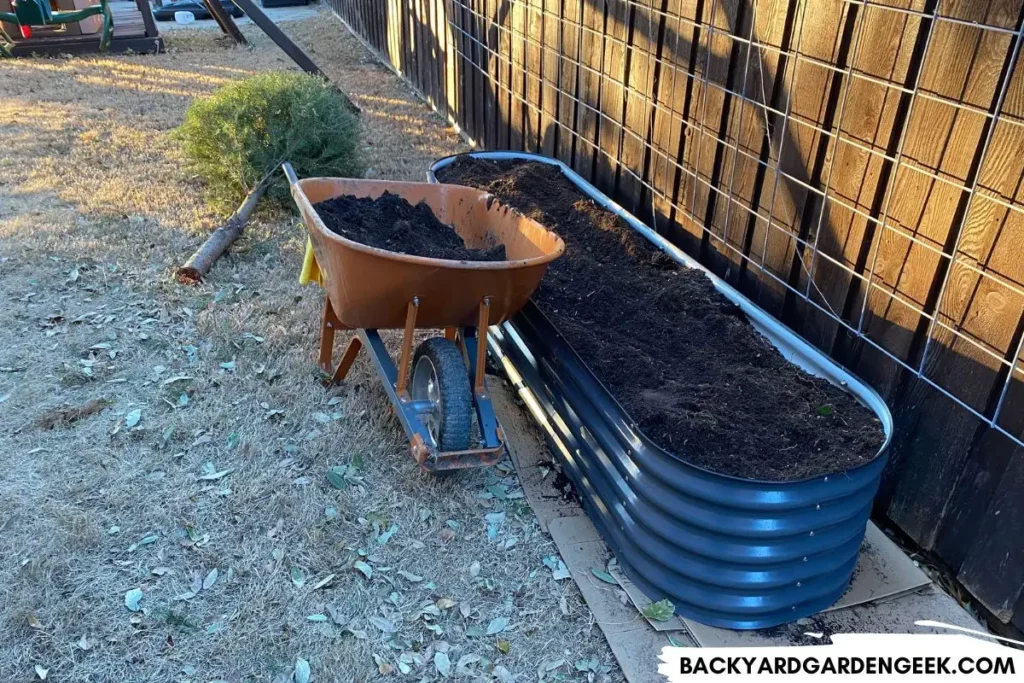
With it, I’ll be able to grow plenty of vegetables along my fence, but it also looks really nice.
Simply put, you can have the best of both worlds by selecting the sizes, shapes, and colors that you prefer.
15. Unlevel Land
You can find lots of pros/cons lists online where people compare the various advantages and disadvantages of gardening in raised beds.
I’ve created what I think is one of the most complete lists out there, and in the process, I was surprised at how literally no one was talking about the huge advantage that raised beds have over in-ground gardens when it comes to unlevel land.
If you’ve got slopes on your property, especially if those slopes are more than a few degrees, the last thing you want to do is to create an in-ground garden.
When the first big storm comes, you’re going to regret doing so since you’ll notice lots of soil runoff.
Here’s where raised beds are a huge advantage.
I have lots of slopes in my backyard–some steeper than others. Raised beds have allowed me to garden in places I could have otherwise never gardened.
All I do to make it work is to remove more soil from one side of the slope than I do from the other side of the slope. In doing so, I ensure that the raised bed sits above the surface of the soil yet remains entirely level.
I’ve got 7 raised beds on unlevel, sloped ground, and each of them works wonderfully!

Now that we’ve covered the pros, let’s take a look at disadvantages that come with raised bed gardening.
But here’s the thing: I’ll explain the disadvantages. But I’ll also tell you about ways you can mitigate the disadvantages so that they’re not actually all that disadvantageous.
Con #1: Construction Confusion
It’s easy to get analysis paralysis when contemplating new raised beds. There are just so many options!
The best way to get over this is to begin with selecting your preferred materials, then select a layout and location. Wood? Metal? Plastic?
I prefer metal raised beds since they’ll last far longer than wood and don’t cost much more than wood beds do.
When it comes to placement, you’ll want to take note of the sunlight on your property. Do you want your raised beds to be in full sun or partial shade?
I prefer for mine to be in mostly full sun, but I’ve got a few beds that only get 4-6 hours of sunlight per day, and I’ve managed to grow plenty of plants in them.
Con #2: Installation Expenses
Unlike in-ground gardens, raised beds can be expensive, sometimes very expensive.
I personally think the expense is worth it since raised beds, especially metal ones, will last for 10+ years (and the higher quality ones can last more than 20 years!).
Con #3: Maintenance
If you purchase metal raised garden beds, your maintenance is going to be minimal. I’ve had a few of mine for years, and I haven’t had to do anything with them whatsoever.
But if you’ve built wooden beds, you’ll have to care for them over time. The wood will need upkeep, largely in the form of exterior stains or sealants, and you’ll eventually have to replace boards as they rot away.
This is why I go with metal beds instead of wood ones. There’s much less maintenance involved!
Con #4: Replacement
There’s no such thing as a raised bed that won’t eventually fall apart. Even concrete block raised beds (which I happen to like!) will eventually fall apart…although it’ll be decades before they do.
I’ve got a step-by-step method for gardening using concrete blocks, and I really like growing plants in cinder block holes.
But I’ve replaced several of my cinder block raised beds over time with metal ones because I like the look, feel, and longevity of the latter.
Con #5: Susceptible to Heat
One of the minor disadvantages of raised beds has to do with the hot summer months.
If you’re gardening in concrete blocks or metal raised garden beds, you might notice that your beds need more water more often.
Direct sunlight can heat up raised garden beds, so during the hottest months of the year–especially in more southern climates–you’ll need to make sure you water your plants slowly, deeply, and regularly.
This will ensure that your soil doesn’t dry out too quickly.
Con #6: Hard to Move
Believe me, you do not want to move a raised bed once you’ve installed it.
I once built a raised bed in an area of my yard that I thought had good sunlight. Well, once fall came around, the sun dipped in the sky, and that entire area was covered in shade.
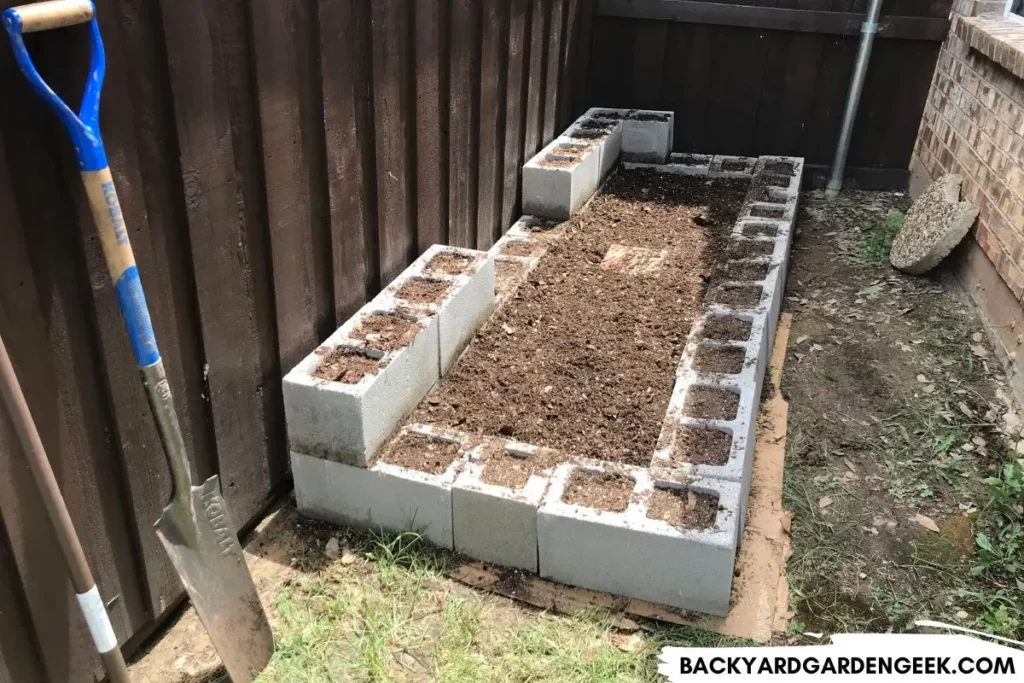
I ended up having to dig out the soil, dismantle the bed, then refill it with soil. It took a few hours, and I wish I had done more planning in advance so as to avoid those wasted hours of work.
Con #7: Difficult to Scale
Unless in-ground gardens, which you can scale by adding additional rows, raised bed gardening can’t be done at scale.
If you want to do more raised bed gardening, you’ve got to spend more money to buy more raised beds.
This makes it difficult to ramp up your plant growing unless you’ve got the money to invest in many new raised beds and the soil to fill them with.
The good news is that you can fill your raised beds with all kinds of cheap, compostable materials.
Con #8: Soil Chill
Just as the soil in raised beds will warm up quicker in spring than your native soil, the soil in raised beds will cool down quicker as the fall comes around.
I’ve never had a raise bed freeze completely since there’s so much soil that’s nearly impossible, but plants in raised beds will be slightly more susceptible to cold weather than those grown in native soil.
Con #9: Unsuitable for Some Plants
You can grow just about anything in raised garden beds, but there are at least 20 plants you shouldn’t grow in raised beds.
Some plants won’t do well without trellises for support. Other plants will grow too aggressively and take over everything they can. Still other plants need way more space than what they’ll have in a raised bed.
Long story short, check out my article on plants to avoid putting in raised beds, then grow everything you want to grow in yours!
More About Raised Beds
If you’d like to read more about raised garden beds, you might want to check out the articles below. I’ve been gardening in raised beds for years, and I’m hoping these will help you avoid some of the mistakes I made when I first got interested in raised bed gardening.

